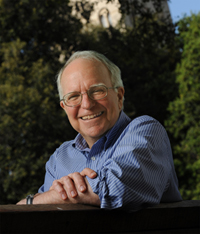The Brookings Institution is committed to quality, independence, and impact.
We are supported by a diverse array of funders. In line with our values and policies, each Brookings publication represents the sole views of its author(s).

Research
BPEA | 1971 No. 3
1971, No. 3
THE CONTEMPORARY PHILLIPS CURVE measuring the tradeoff between inflation and unemployment in the United States is so unfavorable that many economists and most policy makers have reached the conclusion that no combination of inflation and unemployment permitted by the curve is acceptable. The recent policy of the United States has responded to this problem mainly through the imposition of controls on prices and wages. Few economists regard these controls as a satisfactory solution in the long run to the problem of achieving low rates of unemployment at tolerable levels of inflation. There is substantial agreement in the profession that the fundamental cause of the unfavorable Phillips curve is in the failure of labor markets to operate properly. My purpose in this paper is to examine critically the prospects for a long-run attack on inflation and unemployment through treatment of the fundamental causes of the problem. Policies with this goal that operate directly in the labor market are known collectively as manpower policy.